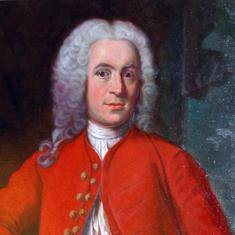Although the “population problem” in India was discussed among British officials and Indian leaders in the pre-Independence period, especially since 1931, an urgent need to address what was seen as the menace of “overpopulation” arose around Independence under the shadow of international discourse on rapid population growth in the Third World, especially India. The 1951 Census showed growth of 13.31 per cent during 1941–51 and a total population of more than 36 crore, adding to itself several millions a year. This was a situation that reminded many of the Malthusian trap, triggering concern over avoiding a “population explosion” that would, apart from neutralising the positive effects of development, threaten the ability of the country to even feed itself. Both food and development struck a chord with Indian leadership, mainly because of the historical legacy of famines and underdevelopment during the British Raj. The sentiment was widely shared and expressed by leaders and policymakers from different parts of India and triggered a debate that has continued to date.
The debate after Independence involved a three-stage process. In the first stage, it followed the general pattern of the global demographic debate on “overpopulation”, whereby rapid population growth was seen as a serious problem that needed to be solved by family planning, education and broader human development. The policymakers rather naively regarded “family planning” as an effective measure that would bring down the population growth rate within a couple of decades. In the second stage, “population control” through these methods was vigorously implemented. In the 1960s, the country scaled up its family planning programme, which had been launched in 1952, into an ambitious programme of “population control”. However, it was soon realised that despite all possible measures the goal of population control remained elusive. Far from coming down, the growth rate was only going up.
This realisation ushered in the third stage of the demographic debate in India. From the 1970s, there began a quest for an explanation for why the policy had failed. The 1971 Census with a growth of 24.80 per cent seemed to confirm the failure of family planning. It was around this time that straightforward regional comparisons showing the accelerating population growth of the north, on the one hand, and the stabilising growth of the south, on the other, emerged as an important axis of the demographic debate in India. Over the ensuing decades, the discussion gradually became focused on this aspect. Certain states in the north were largely held responsible for what was increasingly seen as uncontrolled growth leading to wide demographic divergence between the various regions of India. This was seen as an injustice being meted out to the states, mainly in the south, which, it was claimed, had successfully controlled their population growth by implementing the family planning programme. The differential population growth rates of the south and the north emerged as one of the major explanations for underachievement of development goals. The 1976 decision to freeze representation at 1971 Census figures was a corollary to the international and national debate on “overpopulation” in India.
The pre-Independence population debate in India had started in the early 20th century. PK Wattal’s 1916 book The Population Problem in India: A Census Study was the first major study of this kind. However, it was only after the 1931 Census, which showed a national growth rate of 10.6 per cent, that the debate intensified. Birth control clinics were started in Mysore state. In Madras, a Neo-Malthusian League was founded. American birth control activist Margaret Sanger visited India to popularise birth control. She had a meeting with Mahatma Gandhi to persuade him to support the use of contraceptives. But the Mahatma remained steadfast in his belief that abstinence was the only morally acceptable way to exercise birth control, when needed. In 1937, the Indian National Congress (INC) appointed a National Planning Committee, chaired by Jawaharlal Nehru. A subcommittee on the subject of birth control was appointed under Radha Kamal Mukerjee, professor of economics and sociology at Lucknow University who had written on India’s population problem. The subcommittee endorsed birth control, while the view taken by the National Planning Committee was more nuanced in advocating both birth control and economic development to reduce poverty, which contributed to high birth rates. D Ghosh, in a report titled “Pressure of Population and Economic Efficiency in India” – sponsored by the Indian Council of World Affairs and published in 1946 – examined the impact of India’s growing population on its economic efficiency, highlighting the increase in population over preceding decades.
Ghosh attributed it to high birth rates and falling mortality. He discussed the socio-economic challenges posed by rapid population growth, such as poverty, inadequate housing, and strain on agricultural and industrial resources. Ghosh advocated for a deeper awareness among Indians about the consequences of unchecked population growth and suggested that better economic policies, aimed at controlling population growth while enhancing productivity, were essential to achieve sustainable development. Gyan Chand wrote a number of books and articles on population both before and after Independence. In 1939, he wrote the book India’s Teeming Millions, in which he expressed concern over the population growth of the previous decades. In The Problem of Population, published in 1944, he presented a nuanced view on the subject. While advocating population control, he cautioned that “anyone who suggests restriction of numbers as the panacea for our economic ills betrays an ignorance of the real nature of the problem”. Gyan Chand argued that “the population problem of the country is essentially a part of the problem of remaking the nation and its solution will have to be undertaken as part of an all-round plan for the country.”
Interestingly, Nehru wrote on the issue of population in his famous book The Discovery of India, dedicating to it the chapter titled “The Problems of Population: Falling Birth Rates and National Decay”. Discussing the population question in a world context, Nehru mentioned falling birth rates in many European countries as well as the loss of millions of lives during the Second World War, especially in China, Russia, Poland and Germany. He noted the fact that the eastward sweep of technology, along with education, sanitation and public health, had led to rapid growth in the Soviet Union, which had geopolitical implications. He noted that these changes would sweep Asia, too, and then asserted that “some of these countries, like India, far from needing a bigger population, would be better off with fewer people.”
One of the most influential voices for population control in the early years after Independence was that of RA Gopalaswami, Registrar General and Census Commissioner of the 1951 Census of India. The report on the census submitted by him in a way sums up all that would later go wrong with the family planning programme launched by the Union government. With the conviction of an overzealous birth controller, Gopalaswami compared his report to PK Wattal’s study called The Population Problem in India: A Census Study, published in 1916. He foregrounded his arguments in the Planning Commission’s report, which had mentioned that “the recent increase in the population of India and the pressure exercised on the limited resources of the country have brought to the forefront the urgency of the problem of family planning and population control”, and that this could be secured “only by the realisation of the need for family limitation on a wide scale by the people”.
On the basis of rudimentary estimates of the future agricultural output in India – which he thought could increase by only about one-third – Gopalaswami concluded that “this would correspond to the need of total population strength of 45 crores” by 1969. So, in his almost unreal assessment, the population could be stabilised by state initiative in a mere 15 years. He defined the objective of the population policy “so as to limit the number of births that they do not materially exceed the number of deaths and thus achieve a stationary population before our number exceeds 45 crores.” He coined the fancy-sounding term “improvident maternity”, defining it “as a child birth occurring to a mother who has already given birth to three or more children, of whom at least one is alive”. Gopalaswami then calculated India’s “improvident maternity” at about 40 to 45 per cent. He calculated that out of a crude birth rate of 40 per thousand, 17 births could be prevented. The resultant birth rate of 23 compared to a death rate of 22 would then reduce “yhe rate of growth of population from about 13 per cent per decade to about 1 per cent per decade”. Gopalaswami then pontificated:
The task before the nation is first of all to bring about such a change in the climate of public opinion that every married couple will accept it as their duty (to themselves, to the family, and to the larger family the nation) that they should avoid improvident maternity. The occurrence of improvident maternity should evoke social disapproval as any other form of antisocial self-indulgence. This is necessary, but not enough. There should be standing arrangements for ensuring that advice is given to every married couple on the various ways opened to them for discharging its duties and to make available necessary facilities.
One cannot, however, accuse Gopalaswami of discrimination along class, caste, creed or region, as he suggested that this threshold level of “improvident maternity” must be the same for all. Births over three must not be allowed “even if the peculiar circumstances of the family or the state of health of the mother are such that further maternity may be allowed to occur and the offspring supported without such difficulty. Whether or not one individual can afford it, the nation cannot – and hence it is improvident maternity all the same”. His pious conclusion was that “there is in fact no conflict in this matter between the interest of the individual, of the family, and of the nation as a whole”.
Gopalaswami then delineated his utopian population control plan spanning a mere 15 years. He argued that within five years “the personnel needed for the work can be got together”. He also supported the Planning Commission’s idea of a central research and information unit that would “recommend a few acceptable, efficient, harmless and economic methods” of population control. The second phase of Gopalaswami’s plan would supposedly start after five years, when “a nationwide campaign should be launched for the elimination of improvident maternity from the life of the people”. He believed that “once the mind of the people has been won the rest will be easy”.
Gopalaswami suggested an annual review by the Central government and Parliament, the state government and state legislature, municipal councils, district boards and panchayats “at what rate the incidence of improvident maternity was actually following [falling?] among the people committed to their charge”.
Gopalaswami even worked out the per capita financial support required for his grandiose plan of birth control. He calculated an approximate expense of half a rupee per head of people covered. This would have meant the expense of at least 20 crore rupees at that time. Gopalaswami concluded that “the growth of population cannot be checked unless there are maternity and child welfare services; and we cannot have such services unless we find money for it”. Comparing the costs involved in raising agricultural productivity with that of reduction in “improvident maternity”, Gopalaswami concluded that “the latter offers a permanent solution of the problem, while the former doesn’t. The former opens up a prospect of indefinite duration of hard labour without immediate results. The latter will be rewarded by visible reduction of human suffering and promotion of human happiness while the effort is still proceeding. The choice is clear.”
It should not be imagined that the grandiose plan of Gopalaswami had no takers. As late as the turn of the millennium, another Registrar General and Census Commissioner and former Chief Secretary of Kerala M Vijayanunni in an article titled “RA Gopalaswami’s 1951 Census Report Revisited” lamented its non-implementation.124 After noting that ‘as per the present portents we are expected to fumble and bumble along with inadequate policy interventions and at the same time hurtle forward on the population growth path, leaving the periodically reset population policy objectives and goals unfulfilled’ and projecting India’s population at 200 crore in 2100, Vijayanunni said:
One would wish that Gopalaswami’s improvident maternity plan had been implemented stabilizing India’s population at 45 crores, the right size for the country’s carrying capacity and ecological balance. In that case India would now have been one of the prosperous nations of the world ranking, high in per capita income as well as human development indicators.
The Indian demographer Sripati Chandrasekhar, brought in by Prime Minister Indira Gandhi as the Minister for Health and Family Planning in 1967 in the place of the Gandhian Dr Sushila Nayyar, played a key role in the population control movement. Interestingly, in his first article published in 1943, he had questioned the idea that India was overpopulated or that its population growth was too high. However, after pursuing his doctoral studies in the US, during which he also worked in the American Office of Strategic Services, the forerunner of the Central Intelligence Agency (CIA), as an expert on Indian demography, he took a U-turn and started a birth control propaganda in India.127 He wrote a large number of articles and books on the subject. Author of books such as Population and Planned Parenthood in India and Hungry People and Empty Hands, Chandrasekhar in fact ran a lifelong campaign for population control in India. He started the Indian Institute of Population Studies and edited the journal Population Review for 40 years.
So pessimistic was Chandrasekhar about India’s ability to feed itself and to develop that even the prospect of a 50-crore population of 1967 rising to 60 crore over the next decade or so frightened him: “The average citizen is going to face absolute misery. Food supply will dwindle. There will be no living space. We will be reduced to the level of a cabbage patch.” He also feared the rise of communism in India in such a situation. The next year, in 1968, Chandrasekhar became even more alarmist: “Our house is on fire. We can get the blaze under control” with male sterilisation.
So, for Chandrasekhar, population control was akin to fire control. He was a much-celebrated man in the official media. The Yojana magazine described him as someone “impatient with those who don’t match up to his exacting standards’ and asserted that he had “the moral force of a crusader and the ruthless efficiency of a high-power salesman”. Chandrasekhar would later boast that “it was only after the formation of the new cabinet early in 1967 that a vigorous, new anti-natalist policy was formulated and an all-out campaign begun to halve the nation’s birth rate by 1975–76.”

Excerpted with permission from Demography, Representation, Delimitation: The North–South Divide in India, Ravi K Mishra, Westland.










